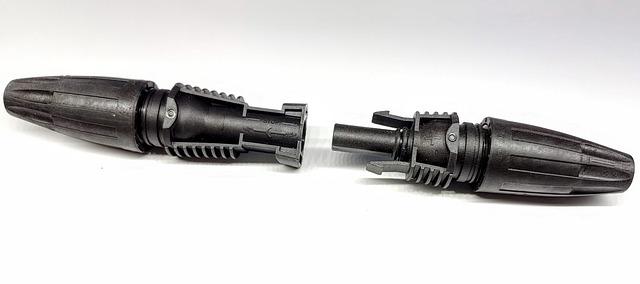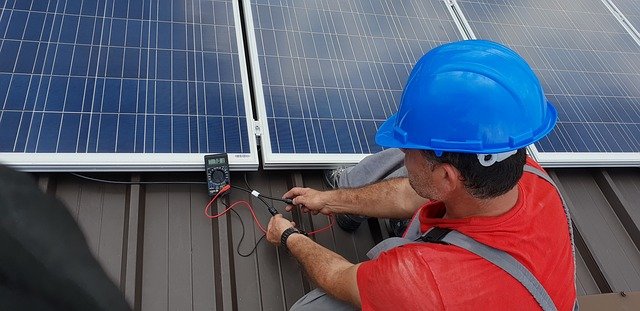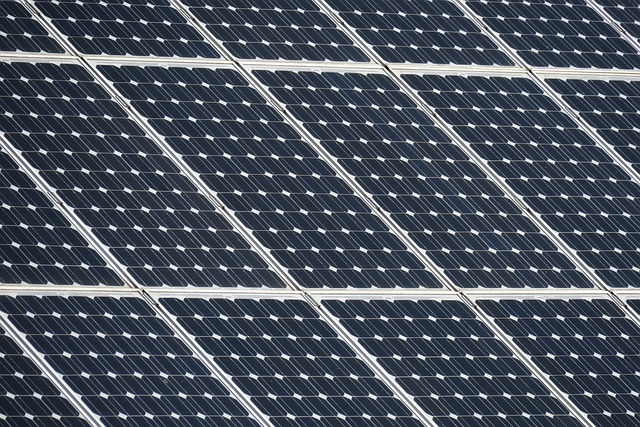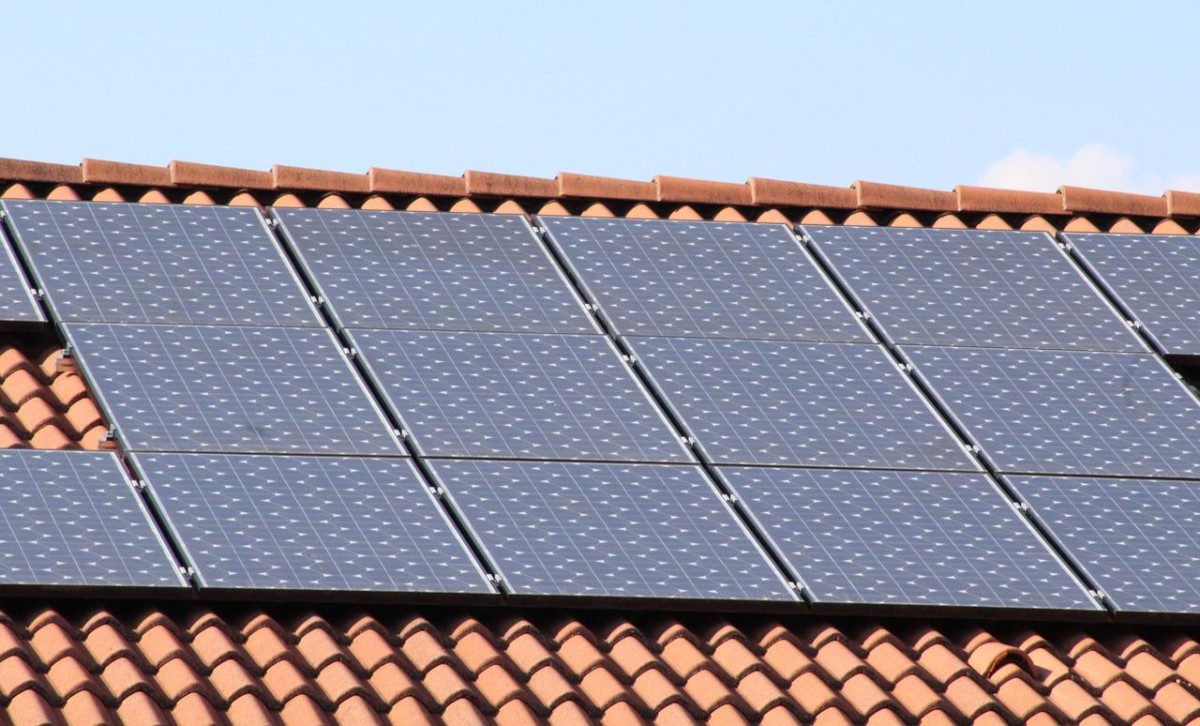Solar Panel in Series vs Parallel What’s the Difference
There are two ways to wire a solar panel in series vs parallel to create an electrical circuit.
Series wiring means the current flows through one panel and then to the next.
The total voltage is the sum of the voltages of the individual panels.
In parallel, each panel has its own voltage and current, and the wattage is additive.
The use of solar panels in series or parallel has a big impact on the amount of energy that can be collected from the sun.
The most common form of solar panel is the single-cell solar panel. Which uses one large silicon wafer to convert sunlight into electricity.
In contrast, a solar panel array uses many smaller cells to generate more power.
This is why arrays are more common and efficient than single-cell solar panels: they can collect more energy from the sun.
Solar Panel in Series vs Parallel Which is Best For You?
Which wiring method is better for your installation depends on how you plan to use your solar energy system and the required voltage.
Series wiring is best for systems with a single battery or load because it increases voltage and keeps Amps low.
Don’t miss this short and highly informative video explaining exactly how to wire both setups quickly
Series Solar Panel Wiring
In series solar panel wiring, the solar panels are connected in a row, one after the other.
The voltage of each panel is additive, so if one panel produces a voltage of 12 volts (V), and another produces 24 V, the total voltage would be 36 V.
This type of wiring is ideal for small solar systems with a few panels, as it keeps the wiring simple and minimizes power loss.
Does connecting solar panels in series increase wattage?
When connecting solar panels in series, the wattage of the solar array is increased.
This is because the voltage of each panel is added together to create a larger total voltage. While this does increase the wattage, it also increases the current.
For this reason, it is important to make sure that the panels are compatible with one another and can handle the larger current.
Below we will take a look at wiring and series vs parallel pros and cons
Voltage & Amps of Solar Panels Wired in Series
Solar panels wired in series will increase the voltage while keeping the amps the same.
This is a great way to get more voltage out of your solar panels, especially if you are using lower-voltage solar panels.
By wiring solar panels in series, you can add more voltage to your system while still using the same amps.
This is a great way to increase the power of your system without having to buy new solar panels for your solar setup.
Solar Panel in Series:
• Pros: When you’re installing solar panels, one of the decisions you have to make is how to connect them.
One option is connecting them in series. The series connection has several advantages over the parallel connection.
First, it allows for a higher voltage and therefore a higher power output.
Second, it’s more efficient because each panel operates at its optimal voltage.
Third, it’s easier to install because there’s only one wire to run from the inverter to the panels.
Finally, it’s more reliable because if one panel fails, the rest of the system keeps running.
• Cons: A solar panel in series is when two or more solar panels are wired together in order to increase the voltage output.
While this can be an effective way to increase the voltage, it also has some drawbacks.
One of the main disadvantages of using a solar panel in series is that if one of the panels fails, then the entire system will fail.
Additionally, when using a solar panel in series, you need to make sure that the panels are matched correctly so that they can handle the increased voltage.
If they are not matched correctly, then you could damage the panels.
Parallel Solar Panel Wiring
When wiring solar panels in parallel, you are essentially connecting all the positive terminals of the solar panels together and all of the negative terminals together.
This creates one large “string” of solar panels with the combined wattage of all the panels in the entire string.
One important thing to note when wiring solar panels in parallel is that you must use a combiner box to combine the whole string into one larger circuit.
What is a Solar Panel Combiner Box
When installing a solar panel system, one of the most important (and often overlooked) components is the solar panel combiner box.
What is it, and what does it do?
A solar panel combiner box is simply a junction box that connects multiple solar panels together forming a solar power system.
It allows you to connect your panels in series or parallel, depending on your needs and the specifications of your system.
The combiner box also provides a place to connect your charge controller and/or inverter and includes fuses or circuit breakers to protect your system from overloads.
Voltage & Amps of Solar Panels Wired in Parallel
When wiring solar panels in parallel, the voltage is additive and the amps are multiplied.
For example, if you wired two 12-volt solar panels in parallel, the system would produce 24 volts at 12 amps.
This is a common wiring configuration for off-grid solar systems that need more power than a single panel can provide.
Wiring solar panels in parallel also increases the reliability of the system by providing redundancy if one panel fails.
Solar Panel in Parallel:
• Pros: When it comes to solar panels, many homeowners are familiar with the series version.
With this configuration, the panels are connected in a line from the inverter to the battery.
This type of installation is easy to install, but it can be less efficient because there is less light hitting each panel.
Parallel installation, on the other hand, separates the panels into two or more parallel lines and allows for more light to hit each panel.
• Cons: Solar panels in parallel provide more power than a single solar panel.
This is because when the sun shines on multiple solar panels, the energy is combined and results in more wattage than a single solar panel.
Additionally, having more than one solar panel means that you will require a larger amount of wiring, plus this setup requires more space to house the panels.
MC4 Connectors for Wiring Solar Panels in Series vs Parallel

When wiring solar panels in a series or parallel configuration, it is important to use MC4 connectors.
These connectors have positive and negative terminals that can be easily connected to solar panels.
When wiring solar panels in a series, the voltage of each panel is added together.
When wiring solar panels in a parallel wiring configuration, the current of each panel is added together.
Parts List For Wiring Solar Panels in Series or Parallel
When wiring series vs parallel solar panels, there are a few things to consider.
The first is what type of solar panel to use.
There are two types: monocrystalline and polycrystalline.
Monocrystalline solar panels are more efficient but cost more. Polycrystalline solar panels are less efficient but less expensive.
The second consideration is the size of the solar panel array.
The size will determine how many solar panels can be wired in series or parallel.
Wiring solar panels in series increases the voltage while wiring them in parallel increases the current.
The final consideration is how to keep current in the solar panel safe, always a good idea.
The best way to do this is to use a voltage regulator.
This will allow you to safely wire multiple solar panels in parallel or in series without having to worry about overloading them.
There are a few other considerations when wiring solar panels, such as wire sizes and fuses, but these will vary depending on the specific application.
In general, wiring solar panels in series is better for larger systems because it increases the voltage and reduces the current.
Do Solar Panels Charge Faster in Series or Parallel?
Solar panels can be wired in series or parallel to increase the voltage or current, respectively.
In a series circuit, the current is additive, while in a parallel circuit, the voltage is additive.
A solar panel system wired in series will charge batteries faster than a solar panel system wired in parallel.
Does Wattage Increase in Series?

In a world where technology is constantly evolving, it’s hard to keep up with the latest trends.
One such trend is the wattage race: manufacturers are constantly releasing products with higher and higher wattages. But does wattage increase in series?
To answer this question, we first need to understand what wattage is. Wattage, which is measured in watts, is the amount of power that a device consumes.
It’s determined by multiplying voltage by current. So, if you have two devices with the same voltage but different currents, the device with the higher current will consume more watts.
Now that we know what wattage is, let’s look at whether it increases in series.
In theory, it should – after all, if you have two devices with the same voltage but a different electrical current, wouldn’t they consume more watts if they were connected in series?
How Can I Increase My Solar Panel Output?
There are a few ways that you can increase the amount of power your solar panels produce.
One important consideration is to install more panels, which will obviously increase your output.
Another is to make sure that your PV panels are in direct sunlight as much as possible;
If they’re shaded by trees or another structure or simply just partial shading, the performance of your system output will be reduced.
You can also improve their efficiency by cleaning them regularly and keeping any debris or dirt away from their surfaces.
Finally, if you have an adjustable panel system, you can adjust it to face south (in the northern hemisphere) or north (in the southern hemisphere) for maximum sun exposure.
Can 12v Solar Panels be Connected in Series?
Solar panels are a great way to reduce your energy consumption and help the environment. But what if you want to install more panels to increase your power output?
Can 12v solar panels be connected in series?
The answer is yes, 12v solar panels can be connected in series. When connecting solar panels in series, the voltage of each panel is added together.
So, if you have two 12v solar panels that are connected in series, the resulting voltage would be 24 volts.
When connecting solar panels in series it is important to make sure that the wattage of each panel is the same.
If you have two 12v solar panels with different wattages, the highest wattage panel will determine the overall wattage of the system.
Choosing a higher voltage panel over a lower voltage panel will not give you any extra power output.
Can you mix 12V and 24V solar panels?
There is a lot of confusion about 12V and 24V solar panels.
Some people think that you can only use one type or the other.
This isn’t true. In fact, you can mix and match 12V and 24V solar panels as long as they are all wired in series.
The reason for the confusion is that 12V solar panels tend to be a little bit cheaper than 24V solar panels.
So, people often buy a few 12V solar panels to start with and then add on more 24V solar panels later when they can afford them.
If you’re thinking about doing this, make sure that your charge controller is compatible with both voltages.
Not all charge controllers are compatible with both voltages, so you’ll need to do your research first.
How Many Solar Panels do I Need For 3 KW?

How many solar panels do I need to produce 3kw of energy?
This is a question that many people have, and the answer can vary depending on a number of factors.
However, we will try to give you a general idea of how many solar panels you need for 3kw of energy production.
First, it is important to understand that not all solar panels are created equally and there are many different panels.
Some solar panels are more efficient than others, so you may need fewer solar panels to produce the same amount of energy.
Another factor that determines how many solar panels you need is the size of your home or business.
If your home or building is large, you will need more solar panels than if it is small. For a 3kw home, you will need between 1.5 and 2kW of solar panels.
This means that if your home is 300 square feet, you will need between 75 and 100 solar panels. Finally, the location where you plan to install your solar panels also matters.
How Many Amps Does a 100w Solar Panel Produce?
A solar panel is a device that converts sunlight into electrical energy. Solar panels are made up of photovoltaic cells, which are semiconductor devices that convert light into electricity.
The amount of electricity a solar panel produces is determined by the number of its photovoltaic cells, the size of the panel, and the amount of sunlight it receives.
The straightforward answer is 6 amps in a sun hour, equivalent to 30-amp hours in a day.
Want to know How Many Solar Panels do I Need to Power a Refrigerator ?
There are four main types of solar panels: mono-crystalline silicon, semi-conducting polycrystalline silicon, thin film, and cadmium telluride.
Each type has its own benefits and disadvantages. How many amps does a solar system produce?
A solar power generator is a device that converts the energy from sunlight into electricity.
It works by converting light directly into electrical power, which can then be used in your home or even exported to the electric grid for use.
Solar Panel in Series vs Parallel
Why add a solar panel in series vs parallel? Adding solar panels in a series connection increases the voltage while adding them in a parallel connection increases the current.
The number of voltages produced by the solar panels connected in series is the sum of the voltages of all the panels.
The current is determined by the number of amperes produced by the lowest-performing panel in the circuit.
When connecting solar panels in parallel, if one panel is shaded, its output drops to zero, but current from its non-shaded companions continues flowing through the circuit.
10 fun facts about solar energy
Solar energy is one of the most renewable and sustainable energy sources available. Here are 10 fun facts about solar energy:
- The largest solar power plant in the world is the Longyangxia Dam Solar Park in China, which has a capacity of 850 MW.
- In 2016, solar energy generated enough electricity to power over 10 million homes in the United States.
- Germany is home to the world’s largest photovoltaic system, which is located in the city of Freiburg.
- In 2016, solar power accounted for more than 6% of the electricity generated in the United States.
- Plus, Solar energy is a clean source of energy that can be used to fuel vehicles and buildings.
- Solar panels are made from semiconductor materials like silicon and cadmium telluride.
- Further, Solar energy is the cleanest and most abundant renewable energy source on Earth.
- Solar power plants use either a photovoltaic system or a thermal system to generate electricity.
- In 2016, solar power accounted for more than 6 of the electricity generated in the United States.
- The amount of energy that reaches the Earth per square meter is called solar irradiance.
Solar Panel in Series vs Parallel Conclusion
Solar panel in series vs parallel. When it comes to solar panel installations and your solar energy options, there are two main ways panels can be wired together: in series or in parallel.
In a series connection, the voltage of all the panels is added together, while in parallel each panel retains its own voltage.
So which one is better? The best option depends on how you’re using your solar panels.
If all this information sounds confusing then would it be easier to follow a video with step-by-step guidance?
Solar panel series vs parallel
The debate of solar panel parallel vs series configuration is a common topic among renewable energy enthusiasts.
When it comes to setting up solar panel systems, there are two main wiring configurations – series and parallel.
In a series connection, the negative terminal of one panel is connected to the positive terminal of another panel, creating a chain-like circuit.
This means that the voltage output of each panel is added together while the current remains constant throughout all panels.
On the other hand, in a parallel connection, all panels are connected directly to each other with their negative terminals and their positive terminals connected separately.
This results in an increase in current output while maintaining the same voltage across all panels.
Series connections are most commonly used when trying to achieve high voltages for grid-tied or off-grid battery charging systems.
This configuration can also help minimize wire costs since fewer wires need to be used as compared to a parallel connection setup.
However, if one solar panel fails or experiences shading issues, this can have a significant impact on energy production from all other panels within that series circuit.
Parallel connections work best when looking for high current output instead of voltage output.
They are ideal for small-scale residential installations because they can handle shading issues better than series circuits since each individual solar module will continue generating power even if others experience shade or malfunctioning issues.
The downside is that using this method may lead to higher overall costs due to increased wiring requirements and system complexity during installation as compared to series wiring configurations.
You may also find these related posts of interest too.
Solar Panels for RVs and Campers
Recent Posts
Understanding Energy and Electricity: The Power For Progress
Energy and Electricity Energy and electricity are integral components of modern life, powering everything from homes and businesses to transportation and communication. Without them, the...
The Future of Wind Energy The future of wind energy is set to play a critical role in addressing global energy needs while combating climate change. As renewable energy sources like wind and...


